Raw diets have a requirement for raw edible bone to provide essential calcium. Dogs and cats have calcium requirements for optimal health. Feeding raw meaty bones fulfills these needs. Raw diet ratios include 10-15% edible bone content for dogs and raw diets for cats include 5-7% edible bone as the main source of calcium.
There are guidelines to follow when feeding raw meaty bones to dogs and cats.
Safe Raw Meaty Bones
Always select raw meaty bones that are safe to feed in raw diets.
Risky Raw Meaty Bones
Supervision is necessary when recreational bones and other risky bones are fed.
Raw Meaty Bone Recommendations
Select bones appropriate for the size of the dog or cat consuming them.
Feeding raw meaty bones in a raw diet provides essential calcium. These raw meaty bones can be fed whole or in ground form.
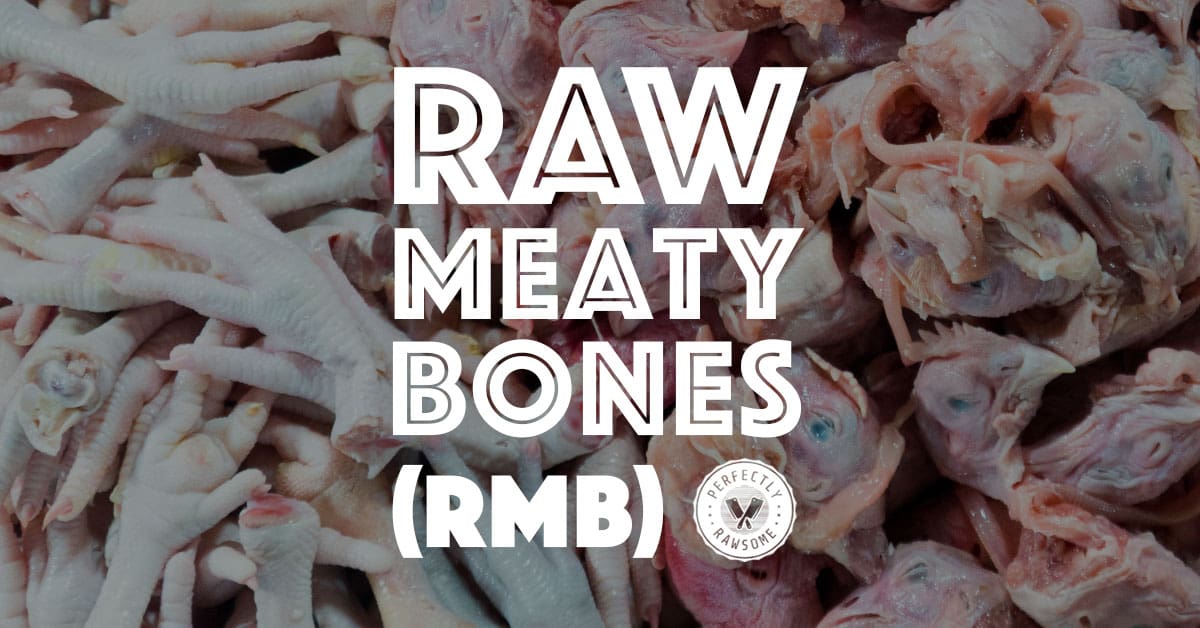
Safe Raw Meaty Bones
Raw meaty bones are edible bone covered in raw muscle meat and connective tissues. Bones are essential in a raw diet to provide necessary calcium and other nutrients which play a vital role in creating firm stool, but it is important to only feed raw meaty bones safe for consumption.
A combination of sources is needed when analyzing raw meaty bones for their nutrient content because the data is not widely available. The USDA Food Database provides nutritional data on muscle meat, skin, and fat from raw meaty bones, but does not provide the nutritional data on the vitamin and mineral content found within the bones.
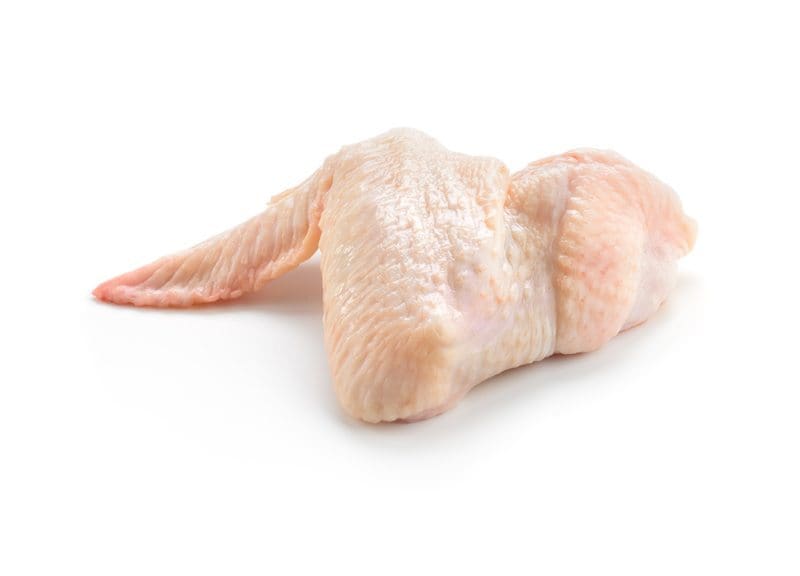
Wings
Raw wings from chicken and duck proteins are a great raw meaty bone for raw diets. These wings can be divided into three sections such as the drumette, wingette, and wing tip. These wing sections prove beneficial for small breed dogs and cats who need smaller portions.
Turkey wings can be fed to large and giant breed dogs, but it is recommended to separate the drumette from the wingette and wing tip. The bone found in turkey drumettes are dense and break in a way that can be risky. The drumette can be deboned to feed the muscle meat and the remaining bone can be saved to make bone broth.
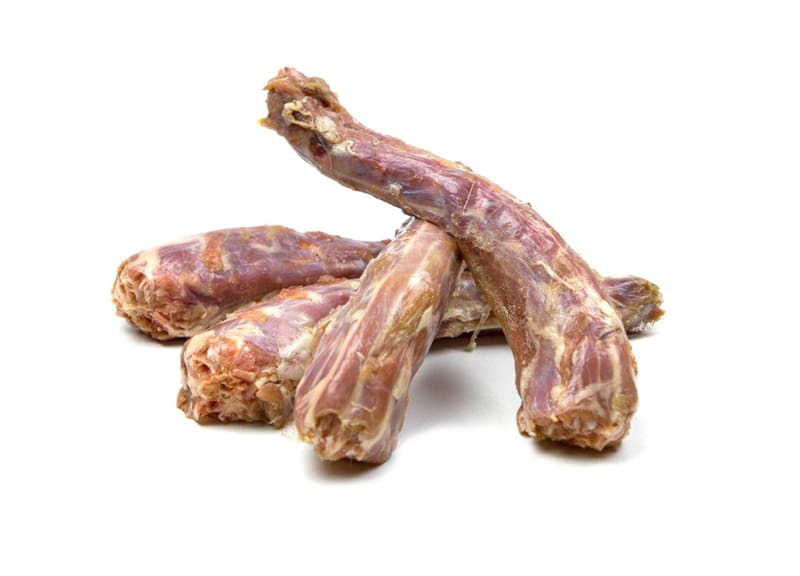
Necks
Chicken, turkey, and duck necks are excellent raw meaty bone options to include in raw diets to meet edible bone requirements. Raw necks are a good raw meaty bone to promote teeth cleaning from chewing.
Many grocery stores carry machine-cut neck bones without much meat attached to the bones. It is recommended to avoid feeding these bones because of the sharp edges from machine cutting and because there is no muscle meat covering the bone.
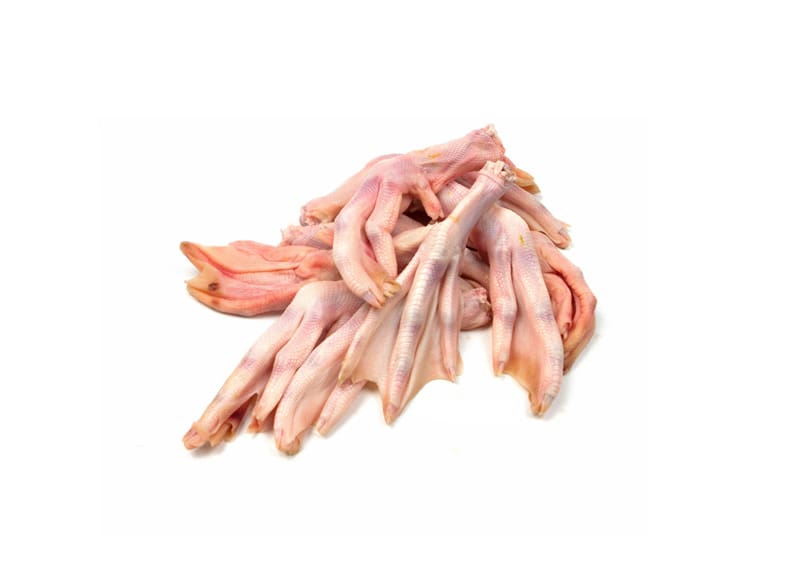
Feet
Raw feet from chicken and duck are smaller raw meaty bones, but can be fed to all pets. Raw feet have a high amount of ligaments and connective tissues which is a great source of naturally occurring collagen and chondroitin.
Pork trotters (feet) are another raw meaty bone option. Pork trotters are better suited for large and giant breeds due to their size. Additionally, pork totters are high in fat and may not be an appropriate raw meaty bone option for dogs who have issues with fatty foods.
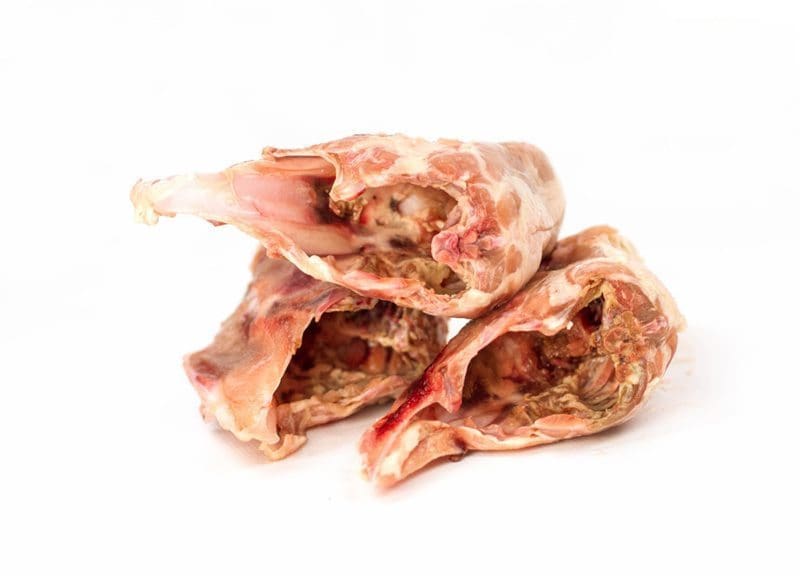
Frames/Carcass
Chicken and duck frames are intact ribs and backs with the breast meat removed. These raw meaty bones are high in bone content, but can be stuffed with boneless muscle meat and organs.
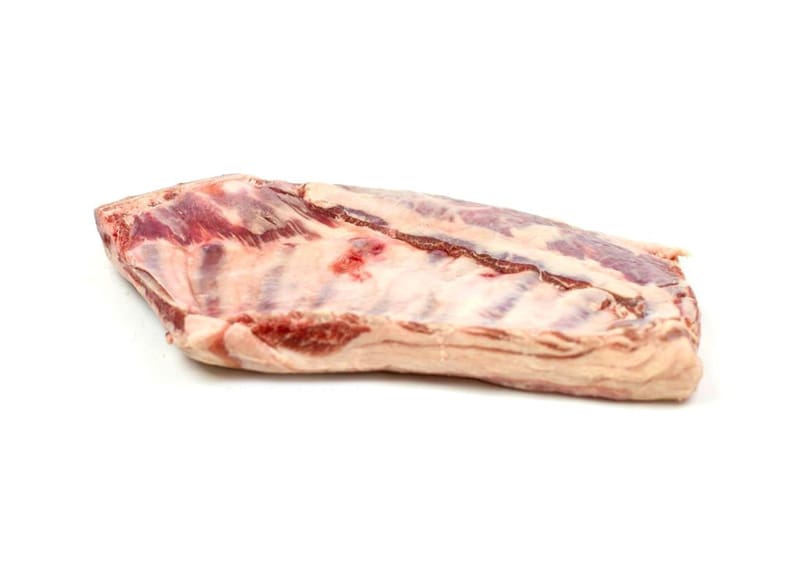
Ribs
Pork, lamb, and goat ribs are raw meaty bones safe for medium to giant breeds. Singular rib bones are a choking hazard and it is recommended to feed ribs in groups. Ribs should be fed in groups of 2-3 ribs versus singular bones.
Rib bones from larger animals, such as beef, should be avoided because the bones are denser in comparison. These bones do raise the risk of tooth fractures.
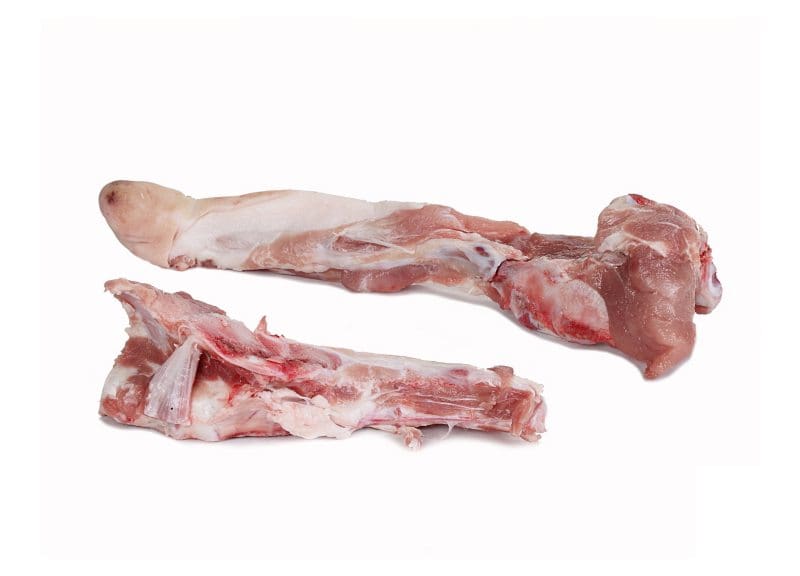
Tails
Pork, lamb, and goat tails are raw meaty bones suitable for all dog sizes. These raw meaty bones are soft enough to be fed to smaller dogs in smaller portion sizes as well as larger dogs. These raw meaty bones are not ideal for cats.
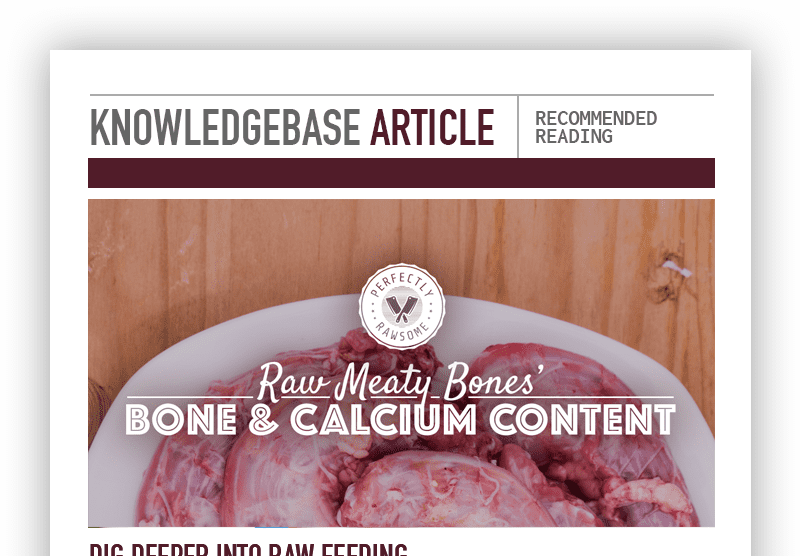
Risky Raw Meaty Bones
There are raw meaty bones that are risky for dogs and cats to consume. Some raw meaty bones are too dense to safely consume and other bones are machine-cut which creates sharp edges on the bones.
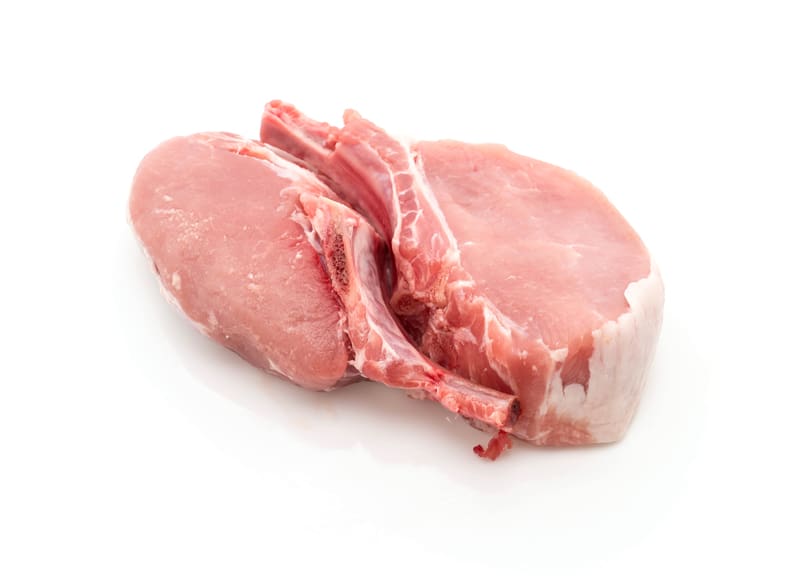
Machine-Cut Bones
Many human-grade foods include machine-cut bones and these should not be fed as a raw meaty bone source. Machine-cut bones are very small and have sharp edges which risks injury to the dog when eaten.
Bone-in pork chops are a common machine-cut bone in supermarkets and are typically very affordable. It is recommended to remove the muscle meat from the machine-cut bone, feed the boneless muscle meat, and use the machine-cut bones to make a bone broth.
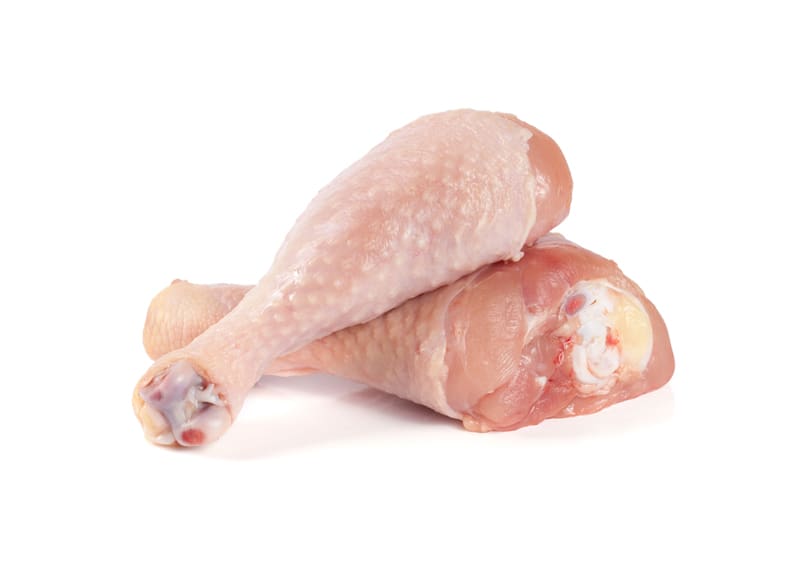
Turkey Legs/Drumsticks & Drumettes
Turkey drumsticks (legs) and drumettes (wing portion) bones are very dense and splinter when broken. These bones are risky to feed dogs and it is recommended to remove the muscle meat from the bone, feed the boneless meat, and use the bone for bone broth.
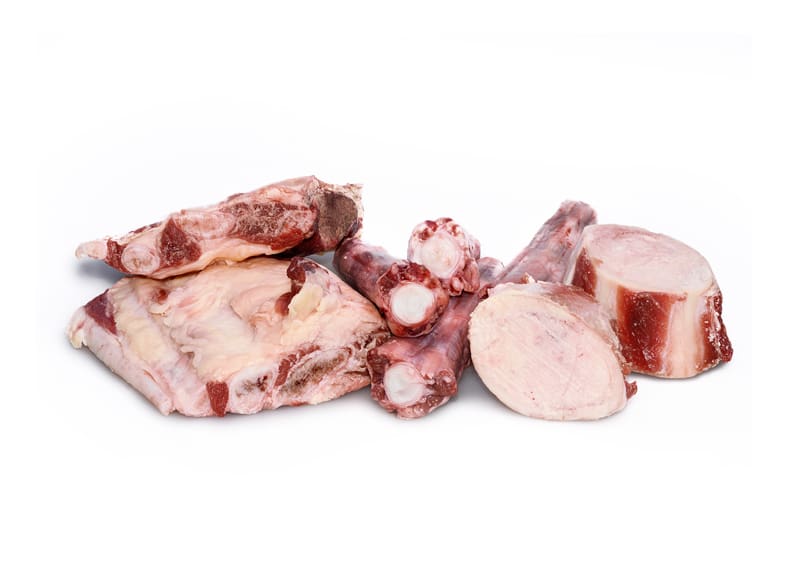
Beef Bones
Ground beef bones are safe to feed because the bones are in ground form. However, whole beef bones are very dense in comparison to other raw meaty bones. These bones risk tooth fractures and impaction. There are plenty of other raw meaty bones to choose from to include in raw diets without the use of beef raw meaty bones.
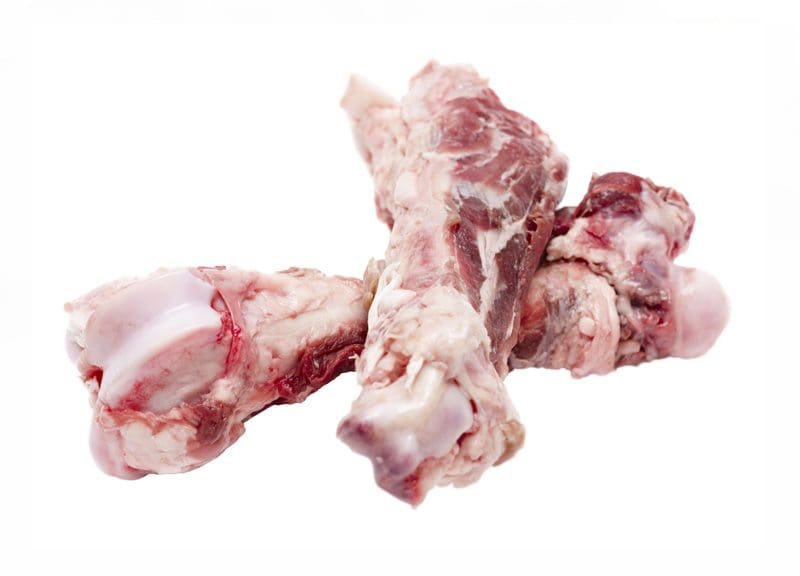
Weight-Bearing Bones
Weight-bearing or recreational bones are found in large grazing animals (cow, venison, ox, etc.). These bones can cause fractures to teeth and the jaw if the pet is an aggressive chewer. Additionally, if large pieces are ingested, a blockage can occur. However, if the pet is a gentle chewer, large weight-bearing bones can be fed with large amounts of meat still attached to encourage the removal of the meat for consumption.
When providing a meaty weight-bearing bone, supervision is crucial while the pet is eating and chewing to prevent any injuries. Take away the bone when all of the meat has been removed and save the bone to make a bone broth!
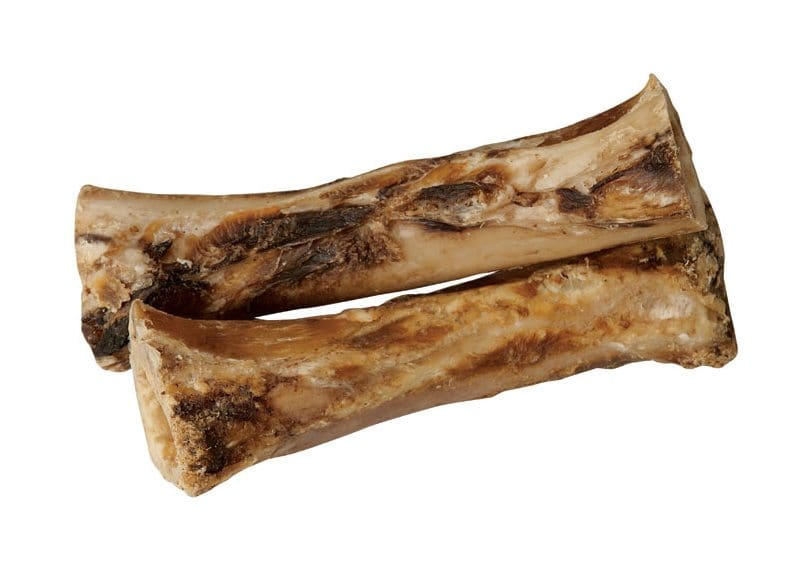
Cooked Bones
Boiled, braised, roasted, smoked, dehydrated, or any other cooked bones are dangerous. These bones are dry and brittle because the very act of cooking bones changes the molecular structure of the bone and removes all moisture which causes them to splinter. These bones should never be fed.
Raw Meaty Bone Recommendations
The following information is average RMB recommendations based off of pet type and size. If the pet has gulping tendencies, it is recommended to feed larger items to encourage chewing and prevent choking.
Cats & Small Breed Dogs
Cats and small/tiny breed dogs require less dense bones which allow them to properly crush and digest the item without causing damage.
Whole Quail
Rabbit
Cornish Hen
Chicken Wings
Duck Feet
Chicken Necks
Medium Breed Dogs
Medium breed dogs are flexible when it comes to providing RMBs. Additionally, all recommendations for small breeds can be fed.
Duck Neck
Rabbit
Chicken Back
Duck Wings
Chicken Feet
Pork Tails
Large & Giant Breed Dogs
Large and giant breeds require larger cuts to prevent choking. Smaller RMBs can be fed to dogs who do not have tendencies to gulp.
Turkey Neck
Chicken Back
Duck Frame
Pork Trotter
Lamb Ribs
Turkey Wingette + Wing Tip
CLOSING COMMENTS
Raw diets for dogs include 10-15% edible bone content and raw diets for cats include 5-7% edible bone. Appropriate raw meaty bones should be selected for raw diets to provide essential calcium.
If raw meaty bones are not included in raw diets, a calcium supplement is warranted to ensure the diet provides sufficient levels of calcium for optimal health.
